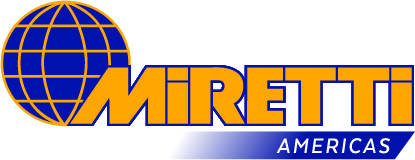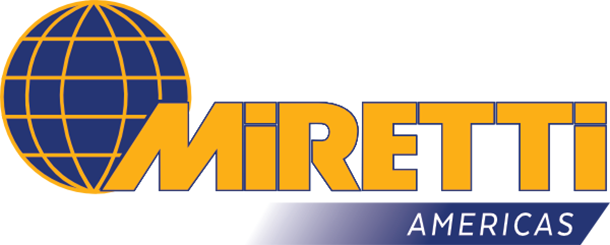Frequently asked questions
OSHA is the government agency responsible for overseeing workplace safety and health. OSHA enforces The Code of Federal Regulations (CFR) in order to prevent work-related injuries, illnesses and deaths. CFR Part 1910.178 is the OSHA Regulation for Powered Industrial Trucks and includes the requirements for designation, classification and permitted location use.
An Internationally Recognized Testing Laboratory is a private sector organization that has met the a country’s necessary specified regulations for Explosion Proof Equipment. The IRTL determines that specific products meet consensus-based standards of safety and assures that these products are safe for use in the country’s workplace.
The NFPA, founded in 1896, is an international non-profit membership organization with more than 75,000 members representing nearly 100 nations. The NFPA serves as the world’s leading advocate of fire prevention and is an authoritative source on public safety. The NFPA’s 300 safety codes and standards influence every building, process, service, design and installation in the United States, as well as many of those used in other countries. The NFPA publishes the National Electric Code (NEC), also known as NFPA 70.
The NEC (NFPA 70) sets forth the electric codes, recommended practices and guides for the practical safeguarding of persons and property from hazards arising from the use of electricity. NEC Articles 500 through 504 cover the requirements for Hazardous (Classified) Locations, Classes I, II, and III, Divisions 1 and 2.
Underwriters Laboratories is an independent, not-for-profit product safety testing and certification organization. Since 1894 UL has the undisputed reputation as the leader in U.S. product safety and certification. UL is one of the most recognized, reputable conformity assessment providers in the world. Representatives from UL sit on all 19 NEC panel committees.
EX environments become volatile when excessive temperatures are introduced and the gases, vapors or concentrations of dust in that environment are ignited. Hazards occur when non-approved electrical apparatus working in the environment fail and create open flames, static electrical discharge or sparks. When the elevation of temperature reaches the auto ignition level of the chemicals being utilized, the result is an instantaneous explosion or fire. EX Forklifts are constructed, tested and classified for use in EX environments. EX Forklifts in static electrical conditions, vehicle turn-over or electrical failure do not produce auto igniting circumstances or temperatures.
The Authority Having Jurisdiction determines if you are required to have an EX Forklift. As defined in the NFPA 505(2006) A.3.2.2: “The phrase ‘authority having jurisdiction,’ or its acronym AHJ, is used in NFPA documents in a broad manner, since jurisdictions and approval agencies vary, as do their responsibilities. Where public safety is primary, the authority having jurisdiction may be a federal, state, local or other regional department or individual such as a fire chief; fire marshal; chief of a fire prevention bureau, labor department, or health department; building official; electrical inspector; or others having statutory authority. For insurance purposes, an insurance inspection department, rating bureau, or other insurance company representative may be the authority having jurisdiction. In many circumstances, the property owner or his or her designated agent assumes the role of the authority having jurisdiction; at government installations, the commanding officer or departmental official may be the authority having jurisdiction.” Factors to consider in purchasing an EX Forklift are: NFPA and OSHA requirements, employee and facility safety, liability and corporate responsibility.
The EE truck rating does not protect against explosive mixtures of gases or dusts in the atmosphere. Type EE trucks are sometimes used in areas where flammable materials are stored in sealed containers. However, it is imperative for corporate safety officials to understand that if a container is pierced by a fork or dropped, the leak or rupture creates an instantaneous hazardous EX area and could result in a fire or explosion. A company safety official may determine that the risk is too great to operate an EE truck in a potentially EX environment. A company’s insurance carrier or OSHA inspector may mandate that EE units be replaced by EX equipment.
Equipment is marked to guarantee safety of operation in a hazardous environment. The use of non-compliant equipment in a Division Classified Hazardous Area is an enormous risk that can result in an explosion or fire. During OSHA workplace inspections, specific products, such as electrically powered industrial trucks used in hazardous areas, are checked for the certification mark of a NRTL. OSHA may cite an employer and impose penalties if the compliance officer finds non-compliant products for which OSHA requires certification.
No. Any resold Miretti Americas EX Forklift must be re-certified from the factory in writing. This is for the user’s protection that the EX labels affixed are valid. This requirement guarantees protection to the secondary user or purchaser. Trucks resold without this written re-certification can be denied access to OEM parts or can be instructed to return the invalidated EX labels to the factory.
Yes, as long as the scale has an Explosion Proof rating. All Miretti Americas EX forklifts can be matched to an independent EX rated digital scale system.
Yes. UL 583 does not permit a standard battery to be used in an EX truck. A standard battery contained in an EX enclosure is also not permitted. The EX battery must be labeled by a NRTL and have a corresponding rating to the EX forklift it powers. Just because an EX forklift is appropriately rated, approved and labeled, does not automatically mean the same for its battery. UL 583 43.1 mandates, “a battery complying with the requirements for a Type EX battery shall be provided for a Type EX truck”.
No. The truck is to be charged in a safe environment. Since there are no EX battery chargers then the truck or the battery must be removed from the hazardous area and charged in the safe area.
The only way an inoperative or immobile EX truck can be repaired in the environment is to “Take Control of the Environment” see #14. If this is impractical, under no circumstances should an operator or service technician open any electrical enclosure while in the atmosphere. The truck must be towed or pushed from the environment for repair.
Technicians from a factory-authorized representative are preferred to repair EX units, however capable in-house technicians are also permitted to repair EX units. Direct factory technical services and parts assistance is available for all customers. It is imperative that only OEM components be used to repair EX trucks.

